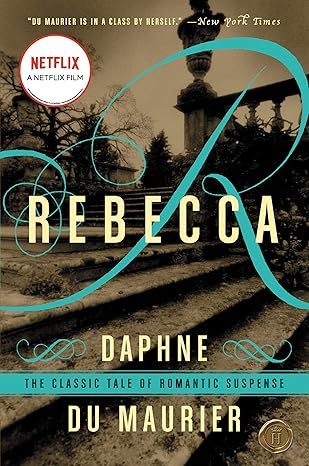The House on the Strand
4.3
-
1,856 ratings
In this haunting tale, Daphne du Maurier takes a fresh approach to time travel. A secret experimental concoction, once imbibed, allows you to return to the fourteenth century. There is only one catch: if you happen to touch anyone while traveling in the past you will be thrust instantaneously to the present.
Magnus Lane, a University of London chemical researcher, asks his friend Richard Young and Young's family to stay at Kilmarth, an ancient house set in the wilds near the Cornish coast. Here, Richard drinks a potion created by Magnus and finds himself at the same spot where he was moments earlier—though it is now the fourteenth century. The effects of the drink wear off after several hours, but it is wildly addictive, and Richard cannot resist traveling back and forth in time. Gradually growing more involved in the lives of the early Cornish manor lords and their ladies, he finds the presence of his wife and stepsons a hindrance to his new-found experience. Richard eventually finds emotional refuge with a beautiful woman of the past trapped in a loveless marriage, but when he attempts to intervene on her behalf the results are brutally terrifying for the present.
Echoing the great fantastic stories of H. P. Lovecraft and Edgar Allan Poe, The House on the Strand is a masterful yarn of history, romance, horror, and suspense that will grip the reader until the last surprising twist.
Kindle
$7.99
Available instantly
Audiobook
$0.00
with membership trial
Hardcover
$6.28
Paperback
$16.16
Ships from
Amazon.com
Payment
Secure transaction
ISBN-10
0812217268
ISBN-13
978-0812217261
Print length
304 pages
Language
English
Publisher
University of Pennsylvania Press
Publication date
December 31, 1999
Dimensions
5.5 x 0.9 x 8.3 inches
Item weight
13.6 ounces
Product details
ASIN :
B00GR5MZHS
File size :
2324 KB
Text-to-speech :
Enabled
Screen reader :
Supported
Enhanced typesetting :
Enabled
X-Ray :
Not Enabled
Word wise :
Enabled
Editorial Reviews
Review
"The House on the Strand is prime du Maurier. . . . She holds her characters close to reality; the past she creates is valid, and her skill in finessing the time shifts is enough to make one want to try a little of the brew himself." ― New York Times
Book Description
"Prime du Maurier. . . . She holds her characters close to reality; the past she creates is valid, and her skill in finessing the time shifts is enough to make one want to try a little of the brew."—New York Times
Sample
Foreword
The simple and instant response to The House on the Strand is that it is a novel revisiting the themes expected of Daphne du Maurier, all about Cornwall, set in a mysterious mansion, and featuring romantic episodes in the region’s history. Ever since the publication Jamaica Inn in 1936, Rebecca in 1938 and Frenchman’s Creek in 1941, du Maurier has occupied this territory in the public imagination.
The huge commercial success of these early novels, written in her late twenties and early thirties, overshadowed the rest of du Maurier’s career and, for the incurious reader, obscures the achievements of her maturity. While remaining a writer rooted in a landscape, she began The House on the Strand in 1967, at the age of sixty, when her interest had moved on to the complexities of human identity and the possibilities of paranormal experience.
Certainly, there is a house of secrets, loaned to Dick, the narrator, by his charismatic friend Magnus, ostensibly for a family holiday but in reality as a strategy to tempt Dick to take the psychedelic drug which is the focus of Magnus’s research. The drug produced hallucinations of time travel, taking Dick back to the fourteenth century and immersing him in a conspiracy that threatened a beautiful young noblewoman, Isolda.
The real material of The House on the Strand is the relationship between its narrator, Dick and his brilliant friend from student days, Magnus. Their attachment was probably unique to middle-class England in the twentieth century, the kind of relationship which Evelyn Waugh portrayed more floridly in Brideshead Revisited, an attachment that was the product of emotional denial, single-sex boarding schools and a paralyzing awareness of social class.
Magnus is clearly the dominant partner, manipulative, amoral, both socially and intellectually superior to the weak-willed Dick, who is described as “highly suggestible.” Dick is a failing publisher, Magnus is a leading research scientist. Magnus is single; relatively late in life, Dick has married Vita, an American with two sons from an earlier relationship.
These names have symbolic meanings: in Latin, still a common currency in education at that time, Magnus means “great” and Vita means “life.” In American slang, Dick has three meanings—a detective, a penis, or an irritatingly stupid person. A sophisticated woman, who had traveled in the U.S. and made close and rather racy American friends, du Maurier would have been well aware of these implications and it is possible that she chose her characters’ names as a private aside to her more worldly readers.
The tensions in this marriage, maintained with a grudging sense of obligation rather than any evident love or joy, frequently swell into outright alienation, encouraged by Magnus. “Three years of marriage and the dishwasher means more to your conjugal life than the double bed,” he scoffs. “I warned you it wouldn’t last.”
Destructive as the relationship with Magnus is, its comfort is addictive and the trips into the past become an extension of the process. Dick escapes with growing compulsion to the simpler, more vivid and less challenging other world. His real life is one of stunted and bitter feelings, most convincingly evoked, as is the honest bewilderment of his wife. Dick dismisses her as a “hot-house plant” but Vita behaves more like a corn-fed nurturer coming to the end of her patience. At forty years of age, Dick wavers between a relapse into his adolescent bond with Magnus and the supreme effort of growing up into a husband and father.
No strong sexual inclination draws him in either direction. This is a man who professes mostly cerebral pleasures, who would rather pore over an old map than caress a young body. There is subtle but cruel comedy in the scene in which Vita hints to her husband that it’s bedtime and she’s in the mood for love, while he, oblivious, peruses his manuscripts. At times this unexamined lack of libido provokes a vinegary misogyny. “The trouble was, with women, they had one-track minds, and to their narrow view everything male, be it man, dog, fish or slug, pursued but a single course, and that the dreary road to copulation. I sometimes wondered if they ever thought of anything else.”
The liaison between the two men has a strong sexual element and Dick often seems to protest his heterosexuality too much, as when he describes their meeting at Cambridge, at the Christmas carol service at King’s College Chapel. “We had not gone for the carols, but to stare at one particular choir boy with a golden aureole of hair,” he remembers, immediately feeling the need to add “not that my tastes inclined to choir boys.”
Allusions to gay sex reoccur throughout the text, in modern and medieval scenes; monks who occupied the priory which once stood on the site of the house are discovered in sadistic horseplay with a half-naked boy, and when Dick and Magnus compare their trips, Dick decides: “I think we found what we deserved. I got His Grace the Bishop and the County, awaking in me all the forgotten snob appeal of Stonyhurst, and you got the sexy deviations you have denied yourself for thirty years.” To which Magnus replies, “How you do know I’ve denied them?” The implicit suggestion is that Magnus, finding Dick sexually evasive, is trying to possess him more completely through their shared drug experience.
The novel was written at the height of the Sixties drug culture, begun just before the famous Summer of Love in 1967 and published in the year of the historic pop festival at Woodstock. Psychedelic drugs, especially LSD, were a mainstream recreation for the young and an essential influence in art in every medium.
Du Maurier, a grandmother who despised fashion and lived in isolation in Cornwall, was in no sense part of this scene but was clearly aware of the interest in mind-expanding drugs which had already been current in some intellectual circles for more than a decade. Aldous Huxley’s The Doors of Perception, describing his experiences with mescaline, came out in 1954.
It was widely recognized that psychedelics are not chemically addictive, and the text suggests a dependence that is psychological rather than physical, though Dick’s struggle to resist temptation is vividly evoked. With a father, husband and son-in-law who had all struggled to control their drinking, du Maurier had a close acquaintance with the addictive personality.
She portrays Dick’s increasing obsession with time travel as a response to a stressful life-passage, a time when his own failure is about to deliver his whole life into the hands of his well-connected wife. Rather than confront this fate, he prefers to live through the idealized historical figures of Roger, his loyal and stalwart alter ego, and Isolda, the woman in jeopardy.
In the book’s final scenes the local doctor, (not the most plausible figure in the landscape) suggests to Dick that the process has been beneficial. “The world we carry inside us produces answers, sometimes. A way of escape. A flight from reality. You didn’t want to live either in London or in New York. The fourteenth century made an exciting, if somewhat gruesome, antidote to both. The trouble is that day-dreams, like hallucinogenic drugs, become addictive; the more we indulge, the deeper we plunge, and then… we end in the loony bin.”
His reasoned analysis falls on hostile ears. Dick says, “I had the impression that everything he said was leading up to… some practical proposition that I must take a grip on myself, get a job, sit in an office, sleep with Vita, breed daughters and look forward contentedly to middle-age, when I might grow cacti in a greenhouse.”
Magnus names two drugs comparable to his concoction—teonanacatl and ololuiqui, and dismisses them, saying “these only push the brain around in different directions—quite chaotic.” Both of these are naturally occurring hallucinogens derived from Central American plants. Teonanacatl is the Aztecs’ name for their sacred mushroom, from which psilocybin is derived, while ololuiqui is extracted from the seeds of the morning glory, Ipomea, and is chemically close to the man-made LSD.
The physical effects of the compound Magnus is investigating—loss of the sense of touch, enhanced sight and the sense of hyper-reality at first, with nausea and vertigo on coming down—are realistic. Where the scenario moves firmly into fantasy, however, is in the description of the drug’s action as a chemical time machine, producing a narrative hallucination that continues through each trip, and taking both men to the same time, place and cast of characters.
The inspiration for The House on the Strand came from the discovery of some glass jars containing biological specimens in the basement of Kilmarth, the house in which du Maurier lived from 1969 until the end of her life. She did not move there willingly.
The great love of her life was Menabilly, the Manderley of Rebecca, into which she moved at the end of 1943. Much as she adored Menabilly, she did not own it. In 1960 she believed that she had negotiated a long extension of the lease, but the owner never signed the document and after his death his heir, a young World War II veteran, reclaimed Menabilly, to her great grief and distress, and proposed that she take Kilmarth, the dower house, instead.
This she did only after long and bitter negotiation which she compared at one point to the war in Vietnam. Kilmarth was smaller and lighter than Menabilly, with a magnificent view across the bay of St. Austell, but she hated the enforced change and feared that it would affect her writing. Even before she moved, however, the new house began to exert its own fascination. She researched its history and obtained the old maps that she has Dick decipher with such pleasure.
At the age of sixty and two years a widow, du Maurier was convinced that her popularity had waned and was afraid that her well of inspiration would run dry. She was anxious about money, despite reassurances from her publisher that Rebecca was still selling 2,000 hardback copies a year. Once she began The House on the Strand, however, the writing took hold of her and she recaptured the feeling of exhilaration that had powered her earlier work. “I got so hooked on the story I actually woke up one day with nausea and dizziness,” she recorded.
The device of scientific research was one she had used only a few months earlier, in a short story titled “The Breakthrough,” which was eventually published in a collection of paranormal and sci-fi stories that included her last great popular success, “Don’t Look Now.” The House on the Strand also returns to many of the elements in The Scapegoat, her breakthrough novel of 1957, which is narrated by a man on the verge of suicide who swaps his life with that of a double. Both novels exercise du Maurier’s sense of the duality of human nature. From the start of her writing career, she created male central characters and achieved a male voice and point of view with complete credibility. The hero of her second novel is also named Dick. These are the voices of her own second self, an identity of which she was aware from her teens.
Du Maurier was born at a time when women did not have the vote, and Victorian beliefs about gender roles were still current. The official and conventional concepts of womanhood were so far from reality as to deny anyone female full human status. Many thoughtful women, who recognized their own instincts to be active, independent or courageous, concluded that their character must include some aberrant masculine strand.
As a child, Du Maurier dressed and behaved like the son her father had wanted. As a teenager she consciously suppressed her masculine side, but as an adult she formed close relationships with both men and women. Once she wrote to a woman with whom she had fallen in love, asking her to imagine “D du M as a little girl… growing up with a boy’s mind and a boy’s heart. And then the boy realized he had to grow up and not be a boy any longer, so he turned into a girl, and not an unattractive one at that, and the boy was locked in a box forever.
“D du M wrote her books, and had young men, and later a husband, and children, and a lover, and… when she found Menabilly and lived in it alone, she opened up the box sometimes and let the phantom, who was neither girl nor boy but disembodied spirit, dance in the evening when there was no one to see.”
The House on the Strand is a delicate but satisfying exploration of these tensions, wrapped in a double narrative of masterly devising. Sadly, it was to be du Maurier’s last successful novel. She followed it with a comedy, which was not well received, and she did not find the inspiration for another full-length work of fiction. Short stories, memoirs and biographies followed, but the phantom she kept in a box never again took hold of her imagination.
Celia Brayfield
2003
Read more
About the authors
Daphne Du Maurier
Daphne du Maurier was born in 1906 and educated at home and in Paris. She began writing in 1928, and many of her bestselling novels were set in Cornwall, where she lived for most of her life. She was made a DBE in 1969 and died in 1989.
Reviews
Customer reviews
4.3 out of 5
1,856 global ratings

Michele
5
My favorite DDM after Rebecca
Reviewed in the United States on May 17, 2014
Verified Purchase
Having read The House on the Strand twice in print and now having listened to it in audio, I can say it is definitely my favorite Daphne Du Maurier work after Rebecca.
This review is of the audio version produced by Naxos books, which doesn't seem to exist on Amazon.
Set in the 1960s, it is the story of Richard "Dick" Young whose best friend, a scientist, convinces him to try a new drug he's developing. It doesn't take much to convince Dick, actually, since he almost worships his friend Magnus and would do anything to please him. Alone in Magnus' house in Cornwall, unemployed and waiting for his wife's arrival from America, Dick takes the drug which transports him back in time 600 years. From then on he is quite literally hooked; bored and unsatisfied with his own life, he is captivated by the drama he witnesses in the 13th century and, heedless of the tremendous danger to himself, persists in taking the drug and experiences several "trips" back in time.
I'll admit that this plot sounds far-fetched, even ridiculous, and I doubt that anyone but Daphne Du Maurier could pull it off. However, so skilled was she as a writer that the plot is not just plausible but captivating. And of course, being a DDM there is a significant element of suspense as the reader witnesses Dick's increasing addiction to the drug and the time travel and the unraveling of his own life around him. Just how will it all end? DDM brings it all to a perfect conclusion.
This captivating story is one that I will doubtless read or listen to again. Michael Maloney's narration is excellent.
Read more
11 people found this helpful
J. Will
5
Novel written years ago is still very readable.
Reviewed in the United States on September 17, 2020
Verified Purchase
I haven't read du Maurier since I was in high school. The very cultured British lady was a writer. "The Strand" is original, very readable and a bit educational. The overall reading experience was well worth the effort. Some might find a bit of Brokeback Mountain in the plot. My nitpick would be that i found the adventures in the present time more interesting than the lapses into the past. Nonetheless, when one is pandemically confined, this makes for a good escape.
Read more
3 people found this helpful
susan4stars
5
A multi-layered time travel book
Reviewed in the United States on July 10, 2018
Verified Purchase
Of course I’m a fan of du Maurier’s earlier classics such as Rebecca and Jamaica Inn, but this is her best novel, in my opinion. It’s not a gothic type mystery like many of her others. It’s much more complex—an intriguing time-travel book with multiple layers— and thus more enjoyable.
Yet, the first time through, I didn’t like it as much. I enjoyed the time travel aspect to 1300’s Cornwall, but I was sometimes confused by the plot and the many place names that sounded the same.
Upon rereading it, I was able to better appreciate du Maurier’s wonderful descriptive writing and the modern day nuances related to the time travel plot: deception, mystery, addiction, and even a hint of gender identity.
If you read this book a long time ago and weren’t sure about it, I urge you to try it again. It’s a fabulous read.
Read more
41 people found this helpful
Diogenes
5
Historical realism meets time travel
Reviewed in the United States on May 25, 2013
Verified Purchase
Nicely plays the romantic narrative from the Middle Ages against the more humdrum reality of the 'present', notwithstanding its semi-miraculous 'time travel' element - so that the reader can't wait for the next return to the fascination of the Middle Ages 'reality'. Potential readers should be prepared to love a traditional historical romance, seen through and framed by, a (relatively) modern-day optic and the geographical location common to both eras. Clearly this was a locale du Maurier knew well, and a bygone era she was able to vividly evoke. It brought me face to face with the realities of life in the first century or two after the Norman Conquest, when a new 'aristocracy' was imposed on the native population and when 'might made right', at least until Runymede would begin the centuries-long process of democratisation. There is no shortage of historical romance, though not all were so realistically conveyed before du Maurier and time travel has been a dependable gimmick since H G Wells. Combining these elements, or perhaps 'dimensions' was a bold step in du Maurier's time and makes this work something of an oddity. Many authors today have taken gladly to historical realism; still, there is charm aplenty in this pioneer.
Read more
M. Wilsen
5
My favorite novel of all time
Reviewed in the United States on June 6, 2011
Verified Purchase
I first read this book in Jr High school in the 70's- a teacher had brought it to my attention after noticing that I read mainly British books in the Reading Lab Class- I was instantly enthralled by the story and Daphne Du Mauier's style. I have read everything she has written The story masterfully blends Fact & Fiction as well as being a Time Travel historical novel. Dick Young takes a drug given to him by his friend Magnus that transports him back in time to the 1300's in cornwall but leaves his body in present- Dick can heard & see the Past but cannot communicate or interfer in it. The Past soon consumes his thoughts and time- leaving his wife and step sons outsiders- ( they not knowing about the drug/time travel.)
I have read the book many times and listening via the book on tape ( I dubbed the library copy on cassette) and still love it. The House on the Strand not only opened up the world of Du Maurier but of Cornwall England. I have spent 3 days in the village & area where the book takes place staying right across from church were much of the book both past & present take place. ( the book contains a map) I brought alone a few of the book on tape so I could listen as I walked many of the same places in the book.
While a CD of this book ( or download) would have been Ideal I have not been able to find an Unabriged version (I am sure I would be Unsatified with an Abriged version!) so until there is I a happy to have my own Professionally made copy ( this being a Library cast off it has some wear & tear but still playable)
Read more
2 people found this helpful
Best Sellers
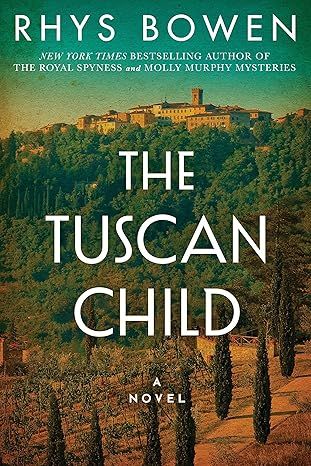
The Tuscan Child
4.2
-
100,022
$8.39
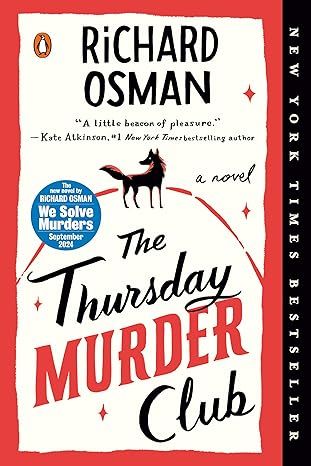
The Thursday Murder Club: A Novel (A Thursday Murder Club Mystery)
4.3
-
155,575
$6.33
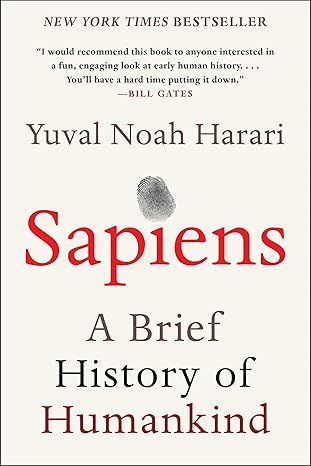
Sapiens: A Brief History of Humankind
4.6
-
140,302
$13.49
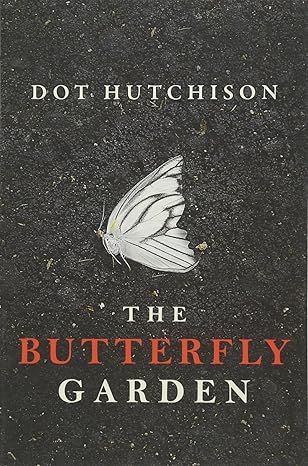
The Butterfly Garden (The Collector, 1)
4.3
-
88,556
$9.59

Things We Hide from the Light (Knockemout Series, 2)
4.4
-
94,890
$11.66

The Last Thing He Told Me: A Novel
4.3
-
154,085
$2.99

The Perfect Marriage: A Completely Gripping Psychological Suspense
4.3
-
143,196
$9.47

The Coworker
4.1
-
80,003
$13.48

First Lie Wins: A Novel (Random House Large Print)
4.3
-
54,062
$14.99

Mile High (Windy City Series Book 1)
4.4
-
59,745
$16.19

Layla
4.2
-
107,613
$8.99

The Locked Door
4.4
-
94,673
$8.53




